There is something about foraging for wild edibles that feels so primal and satisfying. With a little knowledge and some practice, you can find delicious and nutritious food all around you.
From dandelions, violets, and morel mushrooms, there is an entire world out there just waiting to be explored and tasted.
In fact, in North America, there are well over 200 different species of wild plants that you can eat!
Table of Contents
Why Forage for Wild Edibles?
Summer is here, and that means it’s time to get out and enjoy the warmer weather! One great way to do this is by foraging for wild edibles.
Not only is it a fun activity, but it’s also a great way to get some exercise and fresh air. Plus, you’ll be able to find some delicious and nutritious foods that you can’t get at the store.
Foraging is also a great way to connect with nature and learn more about the plants that grow in your area.
So why not give it a try? You might just be surprised at what you find. However, you’ve got to make sure you do it the right way. I’ll tell you all about how to do that.
Foraging Equipment
There are a few things you want to make sure you bring with you every time you trek out to forage for wild edibles, or wild medicinal plants. These will help keep you safe, and help you collect and carry your edibles.
1. A good foraging guide.
A foraging guide that fully explains the plant’s shape, leaves, habitat, and surroundings.
Try and find one with good, full color pictures. For the novice, it’s easy to mistake a plant for a look-alike.
Full color photos will help you determine which plant you are truly looking at. When you are out foraging for wild edibles, that is not the time to guess at a plant.
When you visit a link in this article that takes you to a different website where you can purchase something, I may earn a commission. Read my full disclosure for more details.
Some good reference guides are:
2. A pair of scissors.
Preferably sharp ones. These will help you collect leaves, stems, and blossoms from the plants without having to pull the entire plant out.
A general rule of foraging for wild edibles is to collect no more than 1/3 of the entire plant, and no more than 1/10 of the total amount of that plant in one area.
3. Container for your collections.
This can be a small wicker basket, a Ziploc baggie, a cloth bag, or even a clean grocery bag.
It just needs to be something that you can put your wild edibles in to take home with you. I have even used a paper napkin to wrap some dead nettle in.
4. Bottle of water.
No matter the season, it should go without saying that you should NOT be out hiking, or walking for long periods of time without having water with you. Dehydration is not fun, truly. Always carry at least a small bottle with you when you set out to forage.
5. An experienced forager.
If you are a novice at foraging, you NEED to have someone along that has some wisdom about the plant you are seeking.
Ask questions, and keep asking until you have full understanding. It is far too easy to mistake Queen Anne’s lace for hemlock.
Having someone along to teach you in the beginning will avoid tragedy. This is especially true when hunting mushrooms for the first time.
6. Notebook and pen.
A notebook and pen are vital for recording the location you found a plant, and the plants that surround it. If you bring some color pencils or pens with you, you can even sketch the plant to help you learn more about it.
A camera on your cell phone, or otherwise would be even better for taking pictures of plants!
Safety Tips for Foraging
When most people think of foraging, they envision leisurely walks in the park, picking berries and mushrooms to take home and enjoy.
However, foraging can also be a dangerous activity if you don’t take the proper precautions. Here are some tips to help you stay safe while foraging.
Educate Yourself as Much as Possible
Foraging for wild foods can be a great way to add variety to your diet and connect with nature.
However, it’s important to educate yourself as much as possible before you start foraging. Make sure you know which plants are safe to eat and how to identify them.
It’s also a good idea to learn about the different leaves, stems, and roots of plants, as well as their blooming cycles. This way, you can be sure you’re only collecting from plants that are in season.
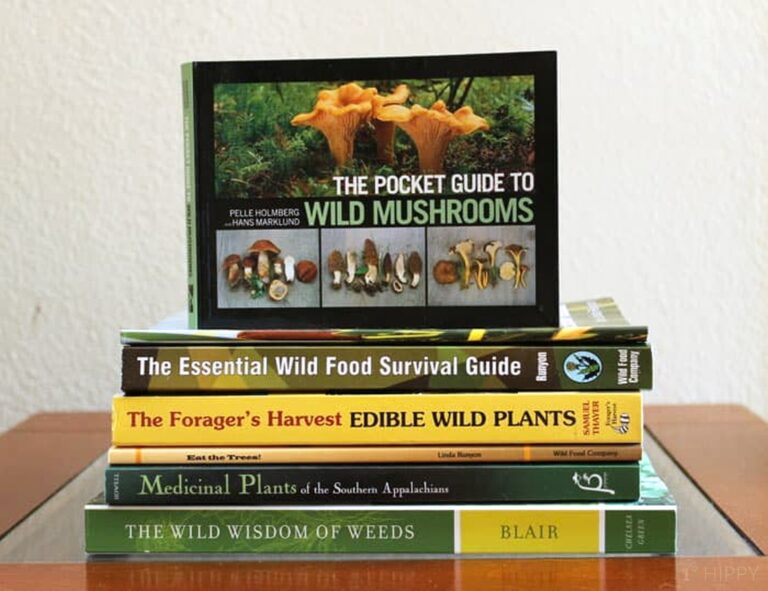
Get a Good Guidebook
Foraging can be a great way to find affordable, fresh produce. However, it is important to get a good guidebook before you head out into the wild. While many edible plants are harmless, there are also many that are poisonous.
A guidebook can help you to identify which plants are safe to eat and which should be avoided. In addition, a guidebook can provide tips on where to find the best foraging spots and how to store your harvest.
Don’t Rely on Common Names
If you’re new to foraging, it’s important to remember that common names can be misleading. What one person calls a “dandelion” might be quite different from what someone else calls a dandelion.
As a result, it’s always best to use scientific names when you’re trying to identify a plant. That way, you can be sure that you’re looking at the right plant.
Learn Habitats
When you’re out foraging for edible plants, it’s important to learn about the different habitats they grow in.
That way, you’ll know what conditions to look for and where to find them. For example, some plants prefer shady areas while others need full sun.
And while some plants can tolerate a wide range of soils, others can be picky about the type of soil they grow in.
Once you’ve learned about the different habitats that various plants prefer, you’ll be able to narrow down your search and have a better chance of finding the ones you’re looking for.
Find Out Companion Plants
When you’re out foraging for wild edibles, it’s not just about what you find on the ground. It’s also important to be aware of the plants that are growing nearby.
Certain plants tend to grow in close association with each other, and this can provide valuable information about their Edibility.
For example, plants in the mustard family (such as radishes, turnips, and mustard greens) often grow in wild carrots. This is a good indicator that the carrots are edible, since they share a similar growing environment.
Similarly, vegetables in the cabbage family (such as kale and Brussels sprouts) are often found near nettles. Since both plants thrive in damp, shady conditions, this is a good indicator that the nettles are edible.
Know the Most Dangerous Plants in Your Area
Before you start foraging, it is important to familiarize yourself with the most dangerous plants in your area.
In North America, some of the most poisonous plants include poison ivy, poison oak, and poison sumac. These plants contain a substance called urushiol, which can cause severe skin irritation.
Other dangerous plants to watch out for include giant hogweed, water hemlock, and nightshade. If you are unsure about a plant, it is best to err on the side of caution and leave it be.
Understand the Universal Edibility Test
Don’t eat anything you find while foraging unless you are absolutely certain it is safe to do so.
Many plants are poisonous, and even edible plants can cause stomach upset if consumed in large quantities. If you are unsure about a plant, err on the side of caution and don’t eat it.
But before you start eating anything and everything, it’s important to understand the Universal Edibility Test.
This test will help you determine whether a plant is safe to eat or not. I’ll walk you through the steps for this test below, but for now, just know that this is the single best test you can do to make sure the food you find is safe to eat.
First, identify the plant. This is crucial, as some plants may look similar but have different properties.
Once you’re sure of the plant’s identity, conduct a visual inspection. Look for signs of disease or damage, as these can make a plant poisonous.
Next, perform a smell test. Some plants produce toxins that give off a bad odor.
If the plant passes these first two tests, move on to the next step: touch. Gently pressing on a leaf or stem can help you determine whether the plant is oily or milky – both of which can indicate toxicity.
Finally, take a small bite of the plant and hold it in your mouth for 15 minutes. If there is no adverse reaction, swallow it and wait 8 hours to see if any further reactions occur. If nothing happens, the plant is safe to eat in full.
Remember, this test is not foolproof, so it’s still a good idea to combine this with the many other safety tips listed above!
Don’t Assume That it’s Safe Because an Animal Ate It
Just because an animal is eating a plant, doesn’t mean that it’s safe for humans. Animals have different digestive systems than humans, and they can digest plants that we cannot.
In addition, animals may also eat poisonous plants out of desperation or because they are attracted to the plant’s scent or appearance.
Be Mindful of Children
When foraging for food in the wild, it is important to be extra careful if you have young children with you.
Some plants can be poisonous if ingested, so it is best to err on the side of caution and avoid eating anything unless you are absolutely sure it is safe.
If you are unsure about a plant, take a picture of it and consult a field guide or an expert before consuming any part of it.
Furthermore, be sure to teach your children about which plants are safe to eat and which ones they should stay away from.
Try Just One Food at a Time
When foraging for new foods, it’s always best to start with just one plant or fruit at a time. That way, if you have any reaction to it, you’ll know exactly what caused it. And, of course, be sure to do your research before eating anything you’ve found in the wild!
Be Cautious With Mushrooms
Many people enjoy foraging for mushrooms, as they can add an extra depth of flavor to dishes.
However, it’s important to be cautious when collecting mushrooms from the wild. While some mushrooms are safe to eat, others can cause serious illness or even death.
For example, the Amanita phalloides, commonly known as the death cap mushroom, is highly poisonous.
Symptoms of consuming this mushroom include vomiting, diarrhea, and liver failure. If you’re not sure whether a mushroom is safe to eat, it’s best to err on the side of caution and avoid eating it.
You can also consult a field guide or an expert for help in identifying edible mushrooms. With a little knowledge and care, you can safely enjoy the delicious bounty that nature has to offer.
Be a Good Steward
When you’re out foraging for wild foods, it’s important to remember that you are a steward of the land. That means taking only what you need and being careful not to damage the ecosystem.
When collecting berries or fruits, for example, be sure to leave some behind for the animals that rely on them for food.
And when gathering mushrooms, make sure to cut them at the base rather than pulling them up by the root.
By following these simple guidelines, you can help ensure that future generations will be able to enjoy the bounty of the land.
Be Vigilant
Pay attention to your surroundings while foraging. Be aware of your surroundings and watch out for signs of danger, such as animals or uneven terrain.
Know How to Prepare the Food
Some plants may contain toxins that can be harmful if ingested, so it is essential to correctly identify the plant before consuming it. If in doubt, err on the side of caution and avoid eating any unfamiliar plants.
Once you have collected your chosen food, it is important to thoroughly wash it before cooking. This will help to remove any dirt or bacteria that could cause illness.
It is also a good idea to cook wild foods rather than eating them raw, as this can help to reduce the risk of food poisoning.
Understand What’s in Season
It’s important to understand what’s in season before heading out into the woods. The best time to forage for greens is in early spring, when they are at their tastiest and most nutritious. In summer, look for berries and fruits. And in fall, focus on nuts and seeds.
By understanding what’s in season, you’ll be able to enjoy the freshest, most delicious wild edibles. Plus, you’ll help to ensure the long-term health of plant populations by only taking what you need.
Know What Parts are Safe to Eat
When foraging, it’s therefore essential to know which parts of the plant are safe to eat, and how to prepare them properly.
Fortunately, there are many resources available to help you identify edible plants and learn about the best way to prepare them.
Keep a Journal
Foraging for wild foods can be a fun and rewarding activity, but it’s also important to be safe and responsible.
One way to do this is to keep a foraging journal. This can help you to keep track of where you found certain items, as well as when they are in season.
It’s also a good idea to take pictures of the plants you find, so that you can identify them later. If you’re not sure about something, don’t hesitate to ask a more experienced forager or do some further research.
Learn Toxic Look-Alikes
Many plants have similar-looking leaves or flowers, but they can be very different when it comes to edibility. So, if you’re not sure about a plant, it’s best to err on the side of caution and leave it be.
Only collect plant species that you are confident you can identify. If in doubt, leave it be. Many plants look similar, but only experts can tell them apart with certainty.
Clean Up
Be sure to clean your hands and any tools you use after coming into contact with plants. Some plants can cause skin irritation, and you don’t want to spread that to other areas of your body.
Get Permission
When foraging for food, it’s always best to get permission first. This shows respect for the landowner, and can help to avoid any potential conflict.
It’s also important to be familiar with the area where you’ll be foraging. Make sure you know which plants are safe to eat, and take care to only harvest what you need.
Best Plants to Forage in North America
If you’re new to foraging, here are a few of the best plants to get you started.
Nuts
Foraging for nuts is a great way to add some extra protein to your diet. But with so many different types of nuts out there, it can be hard to know which ones are the best to forage for. Here are a few of the best nuts to look for.
Pecans are one of the most popular types of nuts, and they’re also one of the easiest to find when you’re out foraging.
Pecans are native to North America, and they grow on medium-sized trees. The trees have long, narrow leaves, and the nuts grow in clusters. Pecans have a rich, buttery flavor that makes them perfect for baking.
Walnuts are another type of nut that’s easy to find when you’re out foraging. Walnuts grow on large trees, and they have distinctive, deeply lobed leaves.
The nuts themselves are encased in a hard shell, and they have a rich, nutty flavor. Walnuts are a great source of protein, and they’re also high in healthy fats.
Chestnuts are another good option for foraging. Chestnuts grow on large trees, and they have furry brown exterior shells.
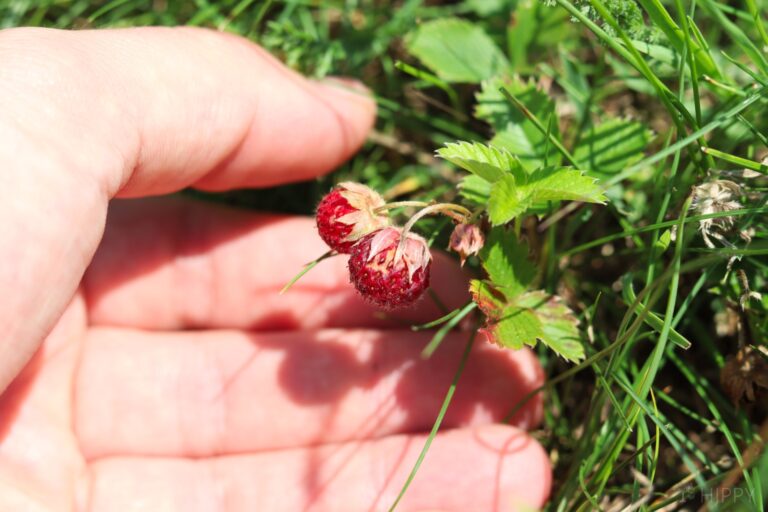
Fruits
Here are some of the best fruits to forage for in the wild:
- Blackberries: These delicious berries can often be found growing along roadsides and in open woodland areas. Make sure to look for ripe berries that are deep black in color.
- Raspberries: Like blackberries, raspberries are often found growing wild in open areas. These sweet berries can range in color from red to gold, depending on the variety.
- Strawberries: While you might not find as many strawberries growing wild as you would blackberries or raspberries, they can still occasionally be found in wooded areas or alongside hedges. Look for plump, red berries that are free of blemishes.
- Apples: While you’re unlikely to find wild apples that are as large and perfect as those you would find at the supermarket, there are many varieties of wild apples that are delicious and nutritious. Keep an eye out for small, bright-colored apples growing on trees in wooded areas.
Ferns
Foraging for ferns is a great way to add some greens to your diet. There are many different types of ferns, and they can be found in a variety of habitats. Here are some of the best ferns to look for when you’re out foraging:
Bracken ferns are common in wooded areas. They have large, triangular fronds and can grow up to six feet tall. Be sure to cook bracken ferns before eating them, as they can be poisonous if eaten raw.
Spleenwort ferns are small, delicate ferns that grow in shady areas. They have thin, dark green leaves and small black spores on the undersides of their fronds. Spleenwort ferns are safe to eat raw or cooked.
Maidenhair ferns are easily recognizable by their distinctive, feathery fronds. They grow in moist, shady areas and prefer cool temperatures. Maidenhair ferns can be eaten raw or cooked, but they should be washed thoroughly first.
Roots
Here are a few of the best roots to forage for:
- Dandelion root: Dandelion root can be roasted and ground into a coffee substitute or used to make tea. It is also rich in vitamins and minerals, making it a great addition to your diet.
- Burdock root: Burdock root is often used in traditional Chinese medicine, but it can also be eaten as a vegetable. It has a slightly sweet flavor and is high in fiber.
- Wild carrot: Carrots are a versatile root vegetable that can be eaten raw, cooked, or juiced. They are an excellent source of vitamin A and also contain potassium and fiber.
- Turnip: Turnips are another versatile root vegetable that can be eaten raw or cooked.
Freshwater Water Plants
Most people think of plants as something that you have to grow in soil, but there are actually many types of plants that can thrive in water.
These so-called “aquatic plants” play an important role in freshwater ecosystems, providing food and shelter for fish, amphibians, and other aquatic creatures.
Some of the most common aquatic plants include water lilies, lotuses, cattails, and reeds. These plants can all be found growing wild in many parts of the world, making them a great resource for foragers.
Wild Spices
Spring is the perfect time to get out and explore the world of wild spices. Here are four of the best spices to forage for this time of year:
- Dandelion: Dandelion leaves are a great source of vitamins A, C, and K, and they can be used in salads or cooked as a green vegetable. The flowers can also be used to make a delicately flavored tea.
- Nettle: Nettles are one of the best sources of iron in the plant world, and they can be used to make a nutrient-rich soup or tea. If you’re feeling adventurous, you can also try adding them to smoothies or juice for a healthy boost.
- Sorrel: Sorrel leaves have a tart, lemony flavor that is perfect for adding zip to salads or cooked dishes. The leaves can also be used to make a refreshing iced tea.
- Woodruff: Woodruff is a sweet-smelling herb that is often used to make May wine or cordials. The flowers can also be added to salads or used as a pretty garnish for desserts.
Seeds
Dandelion seeds are one of the easiest to find and identify, and they make a great addition to salads or as a topping on soup or cereal.
Nettle seeds are a little harder to find but well worth the effort, as they have a nutty flavor that is perfect for pesto or roasted as a snack.
Chickweed seeds are tiny but pack a punch of flavor, and can be used in place of herbs like parsley or cilantro in any recipe.
Lastly, plantain seeds are fairly easy to find and have a mild flavor that is perfect for baking into breads or cookies.
Flowers
Here are a few of the best flowers to look for on your next nature walk:
Dandelions are one of the most common wildflowers, and they make a great addition to any bouquet. They also have a variety of uses beyond just being pretty. The leaves can be used in salads, while the flowers can be used to make tea.
Violets are another common wildflower, and they come in a variety of colors including blue, purple, and white. They make a beautiful addition to any springtime arrangement, and their sweet fragrance makes them perfect for making perfumes or potpourris.
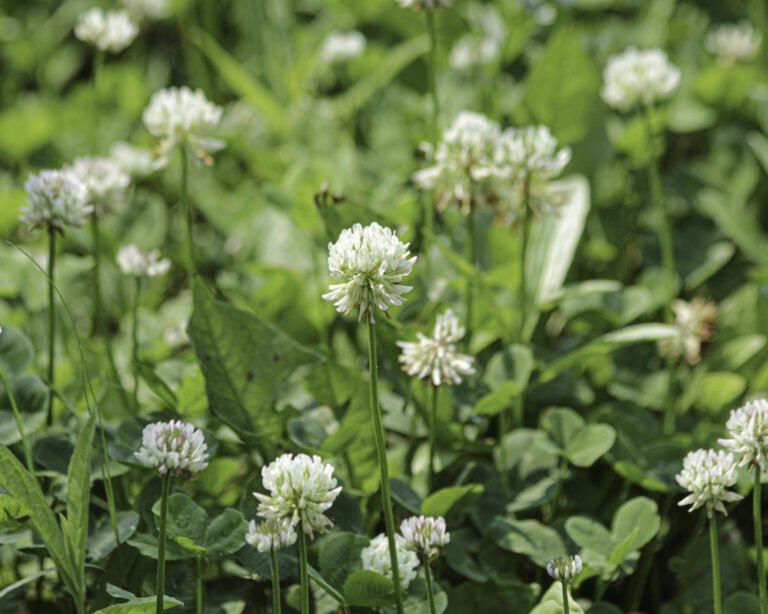
Clover is often considered a weed, but its cheerful blossoms make it perfect for adding a touch of color to your yard or garden. Plus, it’s a great source of nectar for bees and other pollinators.
Pollen
You can even forage for pollen, which has lots of health benefits. But with so many different types of pollen out there, how do you know which one is the best? Here are a few tips to help you find the best pollen for your needs.
Look for flowers that are high in nectar. Flowers that produce a lot of nectar typically have a higher concentration of pollen as well.
Choose brightly-colored flowers. Flowers with brighter colors tend to have more sturdy pollen grains that are less likely to be damaged by wind and rain.
Avoid flowers that are heavy in fragrance. Some flowers produce a strong scent in order to attract pollinators, but this can also make the pollen grains more fragile.
Lichen and Mosses
If you’re looking for a fun and easy way to add a little green to your life, why not go on a moss hunt?
Mosses are small, leafy plants that grow in shady, moist areas. They don’t have any roots, so they’re very easy to collect. Lichens are even simpler – they’re actually a combination of algae and fungi that grow together in a symbiotic relationship.
You can find them on tree bark, rocks, and even concrete. Foraging for mosses and lichens is a great way to get outside and take in some fresh air.
Plus, it’s a great way to add some unique greenery to your home. Here are a few of the best lichens and mosses to look for:
- Reindeer Moss: This type of moss gets its name from the fact that reindeer love to eat it. It’s fluffy and light-colored, and it grows in dense mats. You can usually find it in open areas such as fields or along roadsides.
- Scots Moss: Scots moss is a type of carpet moss that forms dense, green cushions. It’s native to Europe, but it can also be found in North America.
- Sphagnum moss: This type is notable for its ability to retain moisture, making it an excellent choice for humid environments.
- Pincushion moss: This type is known for its slow growth rate and dense matting, which make it ideal for covering bare patches of soil.
What Plants Should I Avoid?
Poisonous Plants
Many plants are poisonous, and ingesting even a small amount can cause serious illness or even death. Some common poisonous plants include rhododendrons, oleander, and azaleas.
If you’re unsure whether a plant is safe to eat, it’s best to err on the side of caution and avoid consuming it. When in doubt, seek out the guidance of an expert before taking a bite.
Mushrooms (Sometimes)
While there are some mushrooms that are safe to eat, it’s best to err on the side of caution and avoid them most of the time.
If you’re unsure about a mushroom, don’t take the risk – there are plenty of other edible plants out there that are worth your time and effort.
“Stinky” Plants
If you’re planning on foraging for your next meal, there are a few things you’ll want to keep in mind in order to avoid any “stinky” surprises.
First, make sure you know what you’re looking for – familiarize yourself with the appearance of the plant you want to find, and be 100% positive that it is indeed the correct one.
Once you’ve found it, take a sniff before plucking it from the ground – if it smells bad, it probably is.
Plants With Leaves in Groups of Three
As a general rule, you should avoid any plant with leaves in groups of three. This includes species like poison ivy, oak, and sumac. While not all plants with leaves in threes are poisonous, it’s best to err on the side of caution and leave them alone.
Plants Growing Alongside Roads or in Developed Areas
When looking for edible plants, it is important to avoid those that are growing alongside roads or in developed areas. These plants are likely to have been exposed to pollutants such as car exhaust or pesticides.
Even if they appear healthy, they may contain harmful chemicals that can make you sick. Furthermore, many plants that grow in developed areas are considered weeds, and may have been treated with herbicides.
It is best to stick to plants that are growing in natural, undeveloped areas. These plants are more likely to be safe and nutritious.
Spoiled Foods
When you’re out looking for edible plants, it’s important to know how to spot spoiled food. After all, you don’t want to end up sick! Here are a few key things to look for:
- wilted or discolored leaves: these are signs that the plant is no longer fresh
- mushy or soft fruits and vegetables: these have begun to rot and are no longer safe to eat
- mold: this can be dangerous to consume, so it’s best to avoid anything that is covered in mold
- insects: while some people don’t mind eating the occasional bug, too many can make you sick
- strange odors: if a plant smells bad, it’s probably not going to taste good either.
Final Thoughts
Foraging for wild edibles is a great way to find new things to eat in the wild. However, you do need to be careful about which plants you eat, because there are poisonous plants out there that could make you sick.
With a little bit of research and some practice, though, you should be able to start identifying safe edible plants in your area.
One last piece of advice, perhaps the most important: if you are not absolutely positive about the I.D. of the plant, especially if you don’t know if it’s really a wild edible, DO NOT EAT IT.
Take a picture of it in its full habitat, and look it up first. Be positive you can identify what you are collecting.
It is better to miss that once in a lifetime plant than to get sick, or develop a far worse condition because you misidentified a species . Have fun, and be safe!
What other things would you take along with you while foraging? Be sure to pin this for later!
Have you ever tried foraging for wild edibles? What was your experience like?
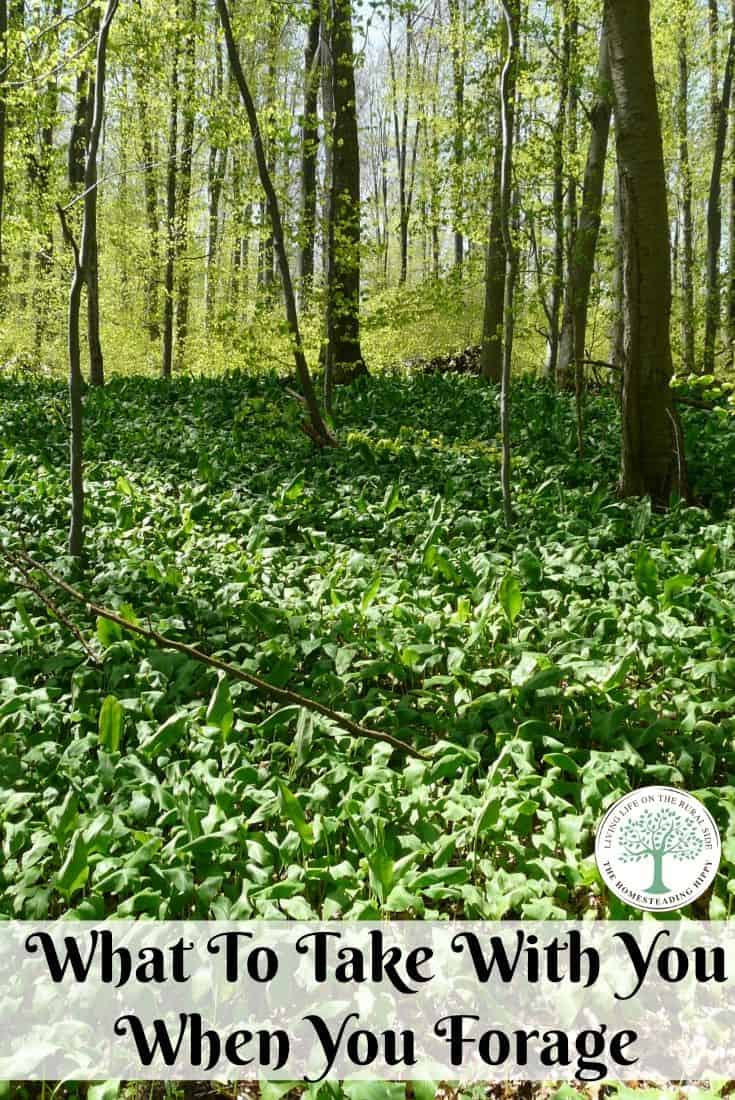
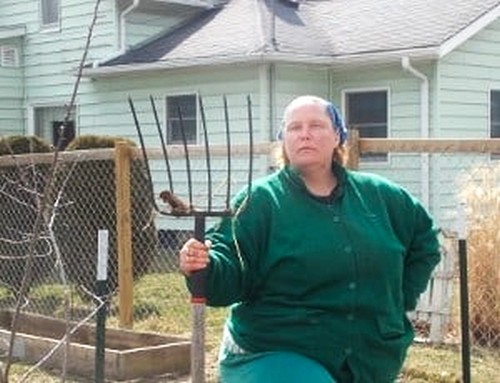
Heather’s homesteading journey started in 2006, with baby steps: first, she got a few raised beds, some chickens, and rabbits. Over the years, she amassed a wealth of homesteading knowledge, knowledge that you can find in the articles of this blog.
Learn more about Heather and the rest of the writers on this page.

I like to take my camera with me so I can take a snapshot of certain areas. ie: a good location shot of ferns from overgrown wild asparagus in summer, becomes a reference of where I can forage the following spring. Also taking pictures of plants that I’m not familar with allows me to record exactly what they looked like. If they aren’t in my guidebook, I can research them online later.
That’s another great idea! thanks for adding that!!
I always take a compass, hand sanitizer for when I have to “go”, insect repellent, my camera,
I would recommend velcro sealed jute bags. They are airy and stop plants from wilting easily. One other thing I like about them is that they are not made from plastic and made from jute fibers.